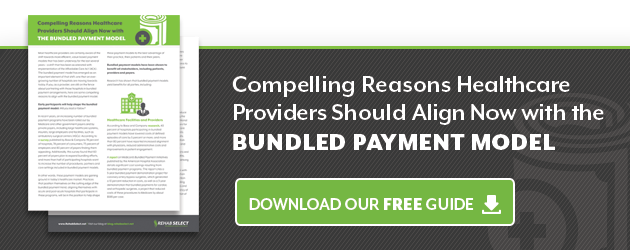 Orthopedic procedures, such as joint replacement, are high on the list of medical episodes that are commonly reimbursed under the bundled payment model today. As common as they are, participation in orthopedic bundles has been optional in most cases, so it is still uncharted territory for many healthcare providers. However, with the launch of the Comprehensive Care for Joint Replacement (CJR) initiative, participation in orthopedic bundles has become mandatory for providers who deliver care to Medicare beneficiaries within the 67 metropolitan statistical areas (MSAs) targeted under this program.
Orthopedic procedures, such as joint replacement, are high on the list of medical episodes that are commonly reimbursed under the bundled payment model today. As common as they are, participation in orthopedic bundles has been optional in most cases, so it is still uncharted territory for many healthcare providers. However, with the launch of the Comprehensive Care for Joint Replacement (CJR) initiative, participation in orthopedic bundles has become mandatory for providers who deliver care to Medicare beneficiaries within the 67 metropolitan statistical areas (MSAs) targeted under this program.
If you are one of those providers, getting up to speed on the bundled payment model is essential to your ability to make it work to the best advantage of your patients and your practice or facility.
To that end, here are 2 things to know about orthopedic bundles:
Where to focus in containing costs
Containing or reducing the cost of care is a primary goal of the bundled payment model. However, participating in an orthopedic bundle does not mean skimping on care—a concern for many providers in adopting bundled payments. In fact, since most bundles—including the CJR and other CMS initiatives—link care quality to reimbursement levels, any provider who did skimp on necessary services or care would be shooting themselves in the foot by risking higher complication rates and poorer patient outcomes.
Rather, the cost-cutting focus must be on care redesign with the goal of eliminating waste and inefficiency in the care process. Providers that have seen success under orthopedic bundles have taken this issue in hand with measures that include:
-
More effective patient pre-admission screening, including health history and risk assessment
-
Standardization of care pathways
-
Increased coordination between providers throughout the continuum of care
-
More effective patient education, engagement and monitoring throughout all stages of care episodes
-
Managing vendor relationships to trim costs and increase value in terms of materials, devices, etc. per episode of care
-
Accurate and detailed tracking and sharing of cost data associated with every aspect of care throughout each episode of care
Where to focus in maintaining/increasing quality
Delivering quality care to patients is already a top priority for good healthcare providers. However, the bundled payment model makes providers accountable for not only the quality of care they provide individually but also the caliber of care their patients receive from other providers throughout the defined episode of care.
What that means is that ensuring quality will require a greater focus on careful vetting of care partners and building solid, collaborative and transparent relationships with those partners, measures that are essential to the successful institution of quality enhancing measures that include:
-
Enhanced patient tracking and follow-up throughout episodes of care
-
More efficient and tightly coordinated care pathways
-
Greater emphasis on effective and efficient post-acute care
-
Better communication, collaboration and coordination during care transitions
-
A greater emphasis on patient education and engagement at each step of the care process
While all of this may sound daunting, and making the changes necessary for success under the bundled payment model will be challenging, many providers who have taken the leap have found that their efforts do indeed pay off for their patients and their practice or facility. For example, data from Medicare's BPCI initiative shows that orthopedic bundles reduced costs and improved quality measures for orthopedic surgery episodes of care—results that mirror those of many orthopedic bundles offered by private payers.





